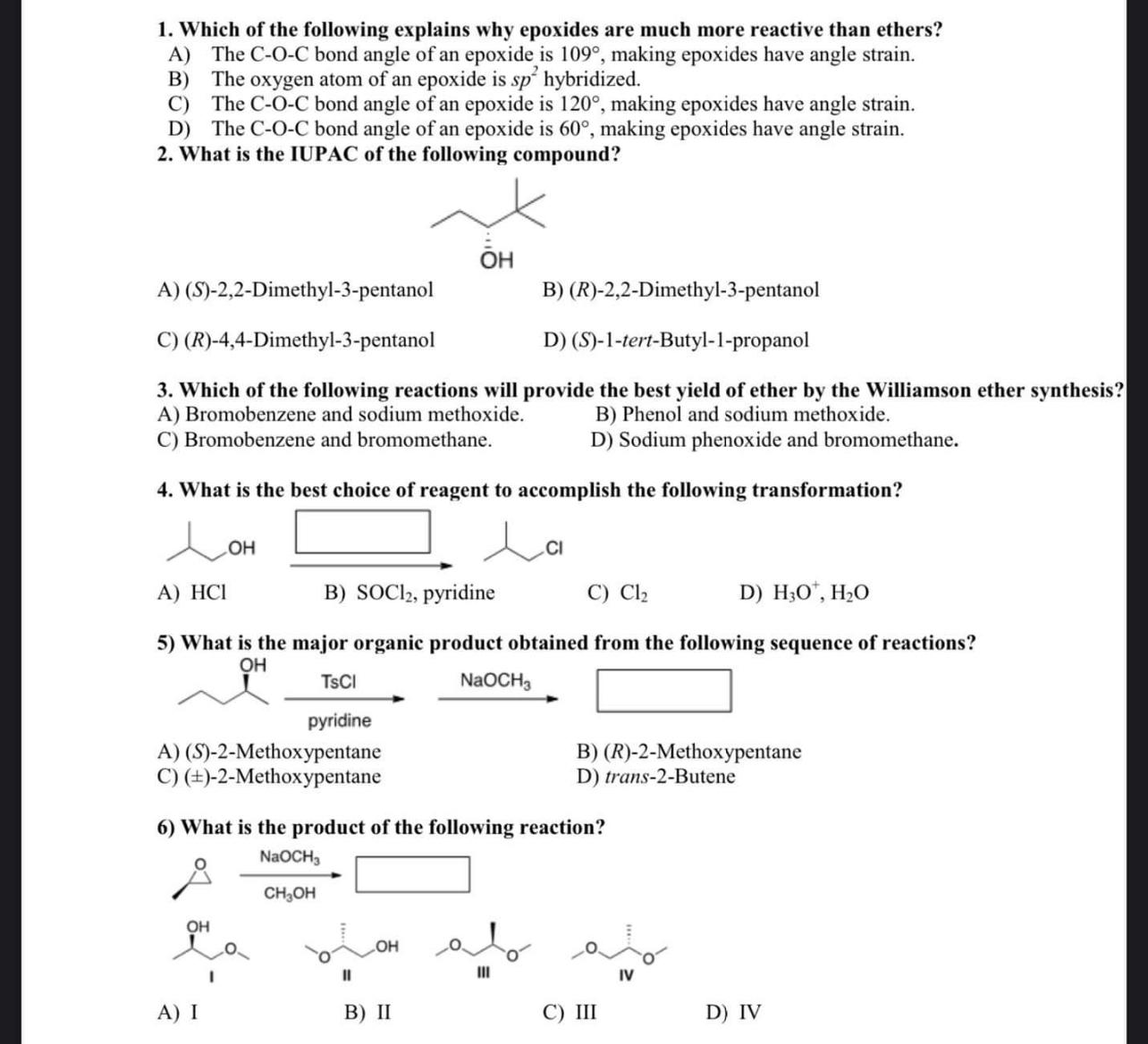Answered step by step
Verified Expert Solution
Question
1 Approved Answer
Which of the following explains why epoxides are much more reactive than ethers? A ) The C - O - C bond angle of an
Which of the following explains why epoxides are much more reactive than ethers? A The bond angle of an epoxide is making epoxides have angle strain. B The oxygen atom of an epoxide is hybridized. C The bond angle of an epoxide is making epoxides have angle strain. D The bond angle of an epoxide is making epoxides have angle strain. What is the IUPAC of the following compound? ASDimethylpentanol BRDimethylpentanol CRDimethylpentanol DStertButylpropanol Which of the following reactions will provide the best yield of ether by the Williamson ether synthesis? A Bromobenzene and sodium methoxide. B Phenol and sodium methoxide. C Bromobenzene and bromomethane. D Sodium phenoxide and bromomethane. What is the best choice of reagent to accomplish the following transformation? A B pyridine C D What is the major organic product obtained from the following sequence of reactions? ASMethoxypentane BRMethoxypentane CMethoxypentane D transButene What is the product of the following reaction? IV 
Which of the following explains why epoxides are much more reactive than ethers?
A The bond angle of an epoxide is making epoxides have angle strain.
B The oxygen atom of an epoxide is hybridized.
C The bond angle of an epoxide is making epoxides have angle strain.
D The bond angle of an epoxide is making epoxides have angle strain.
What is the IUPAC of the following compound?
ASDimethylpentanol
BRDimethylpentanol
CRDimethylpentanol
DStertButylpropanol
Which of the following reactions will provide the best yield of ether by the Williamson ether synthesis?
A Bromobenzene and sodium methoxide.
B Phenol and sodium methoxide.
C Bromobenzene and bromomethane.
D Sodium phenoxide and bromomethane.
What is the best choice of reagent to accomplish the following transformation?
A
B pyridine
C
D
What is the major organic product obtained from the following sequence of reactions?
ASMethoxypentane
BRMethoxypentane
CMethoxypentane
D transButene
What is the product of the following reaction?
IV
Step by Step Solution
There are 3 Steps involved in it
Step: 1

Get Instant Access to Expert-Tailored Solutions
See step-by-step solutions with expert insights and AI powered tools for academic success
Step: 2

Step: 3

Ace Your Homework with AI
Get the answers you need in no time with our AI-driven, step-by-step assistance
Get Started


